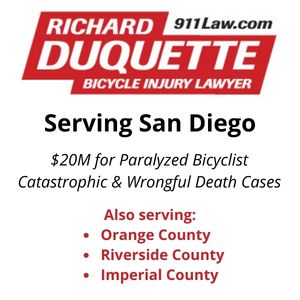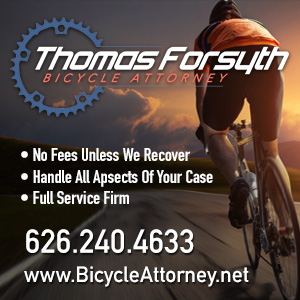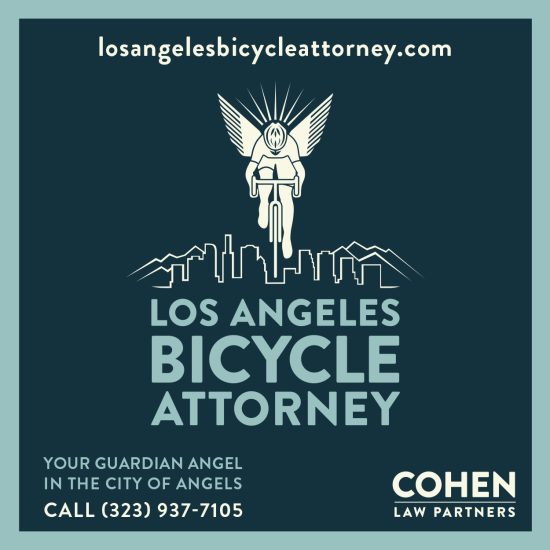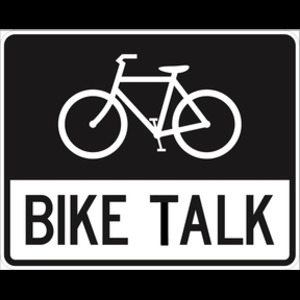One of the biggest transportation fallacies is the enduring myth of cyclists versus drivers.
The fact is, despite the irrational hatred some drivers have for us, most cyclists are drivers as well. And many of us — myself included — belong to one of California’s two branches of AAA, by far the state’s largest motorist groups and among the most powerful lobbyist groups in Sacramento.
Yet remarkably, AAA’s kneejerk response is to oppose any proposed legislation that would increase protection for cyclists or pedestrians — let alone protect their driving-only members from needless collisions and the expensive insurance claims and legal matters that follow.
The latest case in point is AAA’s needless opposition to SB910, California’s proposed three-foot passing law.
AAA initially took a stance opposing the measure as it was originally written. Yet even when the key point they objected to — a clause that would allow drivers to pass at less that three feet when they maintain a speed differential of 15 mph or less — was removed, they continued to oppose the bill.
Their current position is that a three foot passing distance is a wonderful idea — but it should be voluntary on the part of drivers, rather than a mandatory minimum standard.
In other words, if they had their way, California drivers would be able to legally pass you at any distance they damn well wanted to. Whether that’s three feet or three inches.
Not only would that gut the proposed legislation, it would significantly weaken the current law requiring motorists to simply pass at a safe distance — which many drivers interpret as anything that does not make actually contact with the cyclist.
That was made clear by the three separate drivers who passed me Tuesday at a distance of about a foot or less, even after I had taken the lane.
Maybe they were in a hurry and couldn’t be bothered to pass safely. Or maybe they were just pissed off to see a cyclist in front of them.
I can’t speak for you, but I’ve had enough.
I’m sick and tired of AAA using my membership money to fight legislation designed to protect my life. And I intend to tell them so.
And I hope you’ll join me.
Just send a letter — evidently, they still haven’t joined to digital age – to:
Thomas V. McKernan CEO Automobile Club of Southern California 2601 S. Figueroa Street Los Angeles, CA 90007-3254And
Paula F Downey President California State Automobile Association 1276 California Blvd Walnut Creek, CA 94596You can see a sample letter here. But mine is going to be more direct and far less polite.
Because I’m sick of belonging to an organization that purports to support my interests working to make the roads more dangerous for me. And everyone who shares them with me.
Besides, I’m told there’s a pretty good alternative that also supports bikes.
……..
Mark your calendar.
L.A.’s proposed Bicycle Anti-Harassment Ordinance comes before the full City Council on Wednesday, July 20th, with the session starting at 10 am. It’s vital that as many cyclists as possible attend; if you can’t be there in person, contact your councilmember to voice your support.
Even if you live in another city but ride in Los Angeles, this ordinance will affect you and help protect your safety, so make sure your voice heard, as well.
The LADOT Bike Program is collecting cyclists’ stories of being harassed on L.A. streets; if you’re on Facebook, add your story to show how desperately this new law is needed.
And the idea seems to be spreading, even before this law is adopted, let alone goes into effect.
……..
Speaking of LADOT, Jaime de la Vega’s nomination to head the agency was approved by the City Council Transportation Committee, and will go to the full Council on Friday; he promises more emphasis on public transit, cycling and pedestrians.
Let’s just hope he lives up to his promise.
……..
Michael Byerts forward the following theft alert:
The individual shown was videotaped stealing a bike from 5750 Wilshire Blvd one week ago.
Description: Male black, light facial hair, bald.
Last know incident: July-7-11 the suspected individual made an attempt to steal another bike from the premises.
Modus operandi: Suspected thief uses cell phone as guise, selects higher end bikes, cuts the lock with a knife & steals the bike in broad day light.
Last Seen: Running from the scene of a reported bike theft on Wilshire, South on Curson to 8th Street then west on 8th Street.
Please report any sightings of this individual to security personnel or the authorities. Never attempt to approach a suspect yourself.
……..
Katusha’s Alexander Kolobnev became the first — but probably not the last — rider to fail a drug test during this year’s Tour.
Meanwhile, barbed wire survivor Johnny Hoogerland says it’s actually easier to ride in the Tour de France than rest in his bed. Red Kite Prayer seems to capture what we’ve all been feeling since Hoogerland got up from that horrible crash to finish the stage; it’s definitely worth the click to read the rest.
Hoogerland’s name was barely known to most of us before the Tour started. In my head he was just another Dutch cyclist. Now he’s a hero, not of the Tour or of cycling, but of the human spirit. After all, who walks out on a dream as the whole of the world gasps for you?
……..
Someone doesn’t get it, though.
In yet another case of an ESPN talking head demonstrating a hateful bias against cyclists, ESPN sports personality Michael Smith repeatedly tweeted how funny he found the Tour de France collision that injured Hoogerland and Juan Flecha. After a storm of protest, he first offered a half-hearted apology, followed by a far more meaningful one once he realized his job could be on the line — or more likely, once the company’s lawyers got involved.
This follows other notable cases involving bike-hating ESPN personalities, including Tony Kornheiser and the team of Waddle and Silvy.
The inimitable Bike Snob joins in the hilarity and our own SWRVE offers a brilliant response.
Maybe it’s time to contact Robert Iger, CEO of ESPN parent company Disney, to let him know that violence against cyclists isn’t funny.
And that we’re sick and tired of his employees encouraging it.
……..
The L.A. City Planning Commission meets at 8:30 am Thursday to discuss a proposed bike parking ordinance. Will Campbell offers a timelapse of Sunday’s not-quite-CicLAvia ride, which seems to have gone off beautifully. Todd Munson captures another shot of a needlessly blocked bike lane on Venice Blvd. The Engaged Observer looks at riding with the Ridazz. Speaking of whom, Ridazz and skateboard flash mobs may take over the 405 during Carmageddon; thanks to Rex Reese for the heads-up. Orlando Bloom deals with “big and intimidating” L.A. by riding his bike, just like the rest of us. Discuss a possible Santa Monica bike share program on Wednesday the 20th. Biking and BBQ with Long Beach’s Charlie Gandy. Rosemead Blvd will get a road diet complete with cycle tracks through Temple City. KCRW’s Steve Herbert is participating in the Cliff Bar 2 Mile Challenge. Peloton magazine invites you to celebrate Bastille Day with them in Burbank Thursday evening. Remembering former cycling champ and SoCal coach Mark Whitehead. Cycling is up in Santa Cruz, and so are cycling collisions.
Problem drivers tend to be problem people. The newly renamed Velo News is now just Velo, except online where, in an apparent attempt to confuse their readers, it’s still Velo News. Walmart now offers Dutch Bike Shaped Objects, which they seem to consider toys. Enhanced enforcement can cut distracted driving rates. Tales of bike commutes good and bad. Tucson police are already targeting drivers who ignore turn lanes on an upcoming bike boulevard. Over twice as many NYC women ride in protected bike lanes as on streets with no infrastructure. Long Island has the highest cycling fatality rate in the New York area. Victoria’s Secret and some of their models raised $200,000 for a bike ride to raise money for cancer research. Ten Samaritans lift a pickup off a cyclist who was trapped underneath. Niagara Falls police rule the death of a cyclist an accident after he rides into an open manhole; call me crazy, but wouldn’t the crew that left the cover off have some responsibility? If New Orleans can become bike-friendly with their ancient narrow streets and levees crisscrossing the city, no other city has any excuse. A political scientist offers an intriguing and insightful look at the conflict between tribes of cyclists and motorists, and the failure of rule of law when it comes to traffic.
A London woman survives without serious injury after being dragged under a large truck at a troublesome intersection. A new survey shows 62% of Aussies are willing to bike to work — but don’t because of safety fears. In a horrific case, a group of drunken thugs beat a 9-year old New Zealand girl with her own bicycle.
Finally, a team of 50-something cyclists, including one from Laguna, sets a new RAAM women’s record by traversing the country in six days, 11 hours and 34 minutes — and beats two teams of younger women and six eight-man men’s teams in the process.
Something tells me they aren’t afraid to bike to work. With or without separated bike lanes.









